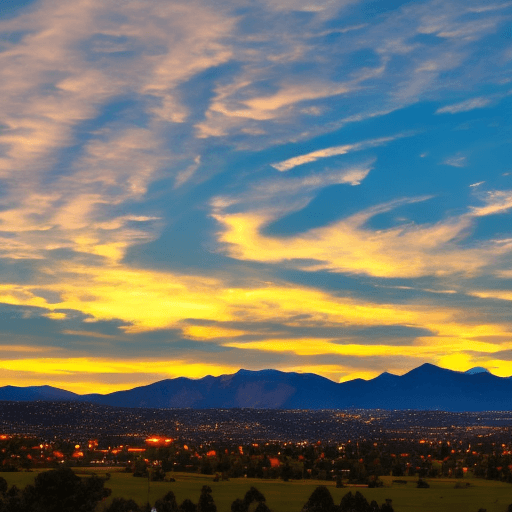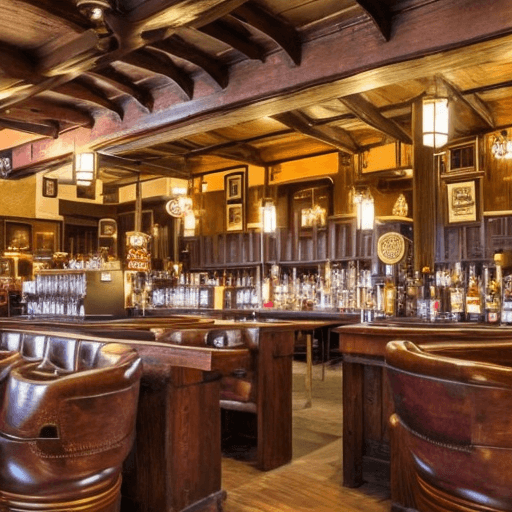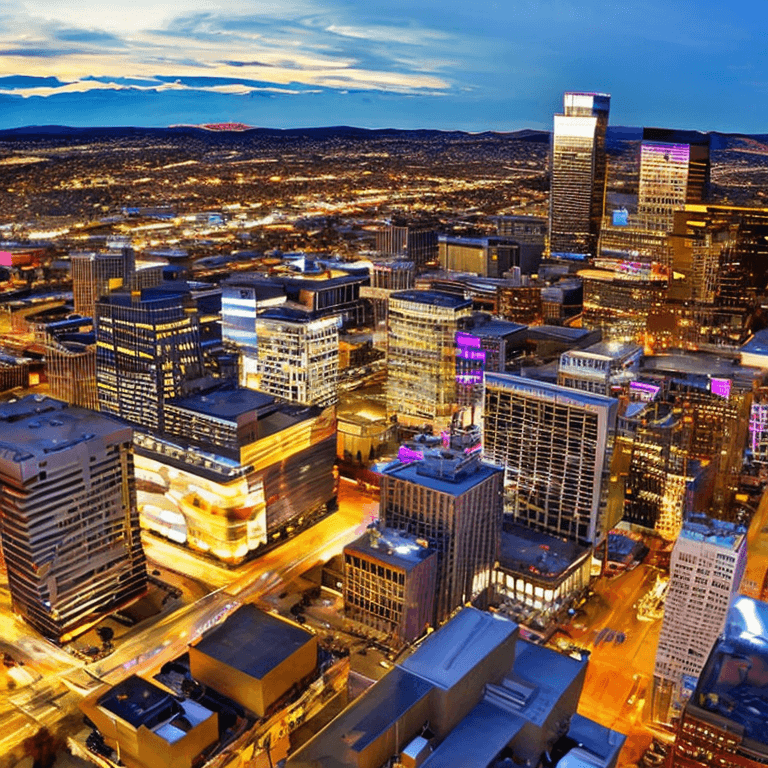The History of Denver
The history of Denver is filled with people and events that shaped the city. From the gold rush to its rebirth after oil.
Early Denver was a hub for those who traveled between the Great Plains and Rocky Mountains. Prehistoric archaeological evidence suggests that peoples from different cultures interacted and intermixed here.
Gold Rush
The Gold Rush of 1849, or the first time that there was a gold boom in Denver, was a significant event in the city's history. It brought many people to the region who were looking for fortune or a new start in life.
The initial gold discoveries were made in Gilpin and Clear Creek Counties, west of Denver. Numerous prospectors had success in this region, such as George Jackson of Idaho Springs and John Gregory of Cherry Creek.
These discoveries did not suffice to reenergize gold rush. A lot of publicity was needed to entice new miners. William N. Byers, editor at Denver's first newspaper Rocky Mountain News, launched campaigns to attract gold-seekers.
Over 100,000 men had left their homes in Kansas and Nebraska to cross the plains into Colorado's mountain country by spring 1859. These men were called "Fifty-Niners."
Some were looking for gold in gulches, such as Clear Creek or Gold Run in Boulder County. Other gold seekers were more ambitious, searching for gold that was buried in the mountains of Colorado.
The first major gold discovery was made in the region around Central City by John Gregory, a Georgian. He was a red-haired, wiry cracker who had a keen eye to find the gold in his native country.
Gregory was followed by a number of other prospectors who made gold strikes in Clear Creek and Gold Run. The prospectors who continued to search in the mountains were rewarded by the discovery of rich placer gold.
Due to the gold rush, Colorado developed into a mining mecca as well as a railroad-based city. The city grew rapidly and was named the capital city of the Colorado Territory in 1881. Denver is a vibrant metropolis with many museums, parks and attractions, as well as other attractions that honor its rich heritage.
Silver Rush
Gold and silver mining was the primary economic engine of Colorado in the 19th century. It generated more than $1 billion in revenue and produced a number of early millionaires, including Nathaniel Hill and Horace Tabor.
The rush began in 1849 when a group of California prospectors traveled west to look for their fortune. They found some gold in Ralston Creek, close to Arvada. Arvada, and later discovered placer gold (veins of gold embedded in the rock) at Cherry Creek. These discoveries were just teasers, but they did spark curiosity in a handful of Midwestern investors and Eastern investors, who soon joined in and began exploring the area further.
Tens of thousands of men fled to northeastern Colorado as the word spread. They came for a variety of motives, ranging from seeking a fresh start to getting caught up in tensions between sections North and South.
Some were enticed by the prospect of wealth by reading promotional literature, such as Horace Greeley's "Go West, Young Man." They also had an insatiable desire for adventure.
Regardless of why they were drawn to the wilds of Colorado, the majority of them were fortunate to find their fortune in gold and silver mining. The discovery of silver in the 1860s combined with the Bland-Allison Act of 1878, which required Congress to buy 4.5 million pounds of silver each month, raised the price of the metal dramatically and enabled the construction of additional mines throughout the state.
After the boom in silver, however, the economy faltered and the majority of mining districts struggled to stay afloat. Durango and Ouray in southwest Colorado were able to hold their own while others, like Creede or Silverton in San Juan Mountains, floundered.
Culture Rush
Denver is a cultural hub. Denver is home to some of the most important art institutions in the country and is home to world-class museums that celebrate the past and present.
A visit to the Denver Art Museum, for instance, is sure to impress with its collection that spans from prehistory to the 21st century. It's also situated across from the Clyfford Still Museum that houses the largest collection of art by an American abstract expressionist.
Denver transformed itself from a frontier city to a modern, prosperous metropolis as the culture craze continued. This change was enabled by a new train line that connected Denver with towns and cities across the country.
This new route also resulted in more revenue for the city, which led to an increase in population growth. When World War II started, Denver was the third largest city in the United States with a population of over 322,000.
The US Mint was another factor that contributed to Denver's growth. It was founded in Denver in 1878. The mint is a renowned tourist attraction, and tours are available daily.
It is a must-see to visit the Molly Brown House, the former residence of Denver's first woman mayor. The Victorian-style house that was restored in Victorian style, provides fascinating insight into Colorado's past and the present.
Although the Gold Rush helped Denver to be recognized as a city, it was not without its difficulties. Many of those who fled their homes in eastern America to find the riches of the west were not well-prepared for their journey. They often traveled in wagons and were susceptible to dehydration, hunger and even death. These circumstances led to a the spread of fear and xenophobia which led to the creation of the Ku Klux Klan.
Oil Boom
Denver City was transformed by the oil boom of 1849. It was a time in which people travelled from all over the world to work in the oil fields. The boom caused a large demand for homes, restaurants and hotels and water systems, to support the growing number of workers in western Colorado.
A number of towns were created in the region to accommodate workers and visitors. Some were small towns with a few shops and eateries, while others were oil towns with restaurants, hotels and recreation facilities.
Gearhart was one of the most famous, and was located half an hour from the Patterson well. There were numerous businesses in the town, including a general shop and a supermarket, a bar/pool hall, machine shops, and other services.
Workers from other areas adored the town as it was affordable and easy to reach. It also had a dance pavilion where laborers and guests could dance.
While the boom was a positive time for certain people however, it also brought a lot of difficulties to Denver and the surrounding communities. Some families and towns would lose their homes while others would become bankrupt or find it difficult to come up with the money.
Many towns also had to deal with an influx of workers as people from other parts of the country were attracted by the high pay and many job opportunities in western Colorado. People who didn't work in the mines had difficulty finding housing, constructing wooden water lines to handle higher flows, and serving meals in restaurants that were crowded with workers and tourists.
The Denver-Julesburg Basin is among the most important oil shale play in the world. While the oil industry in the state is a significant part of the economy, it's not the only one. To boost economic growth, companies are now looking at other sectors such as finance and cleantech. Oil and gas production is not likely to grow as quickly as it did when the law was enacted.
Boom and bust cycle
The cycle of boom and bust is a cyclical period of economic growth and decline that happens frequently in modern capitalist economies. In boom times, the economy grows, jobs are plentiful and investors reap high returns on their investments. The boom is over and the economy begins to shrink. People lose their jobs, and investors lose their capital.
The central bank lends money at low interest rates to both businesses and individuals during the boom. They can put the funds in companies such as technology stocks, houses, or other houses and expect a high return on their investment.
Related: Denver Car Accident Attorney
As the economy begins to slow down, businesses begin to reduce their spending, and employees are beginning to lose their jobs. In an effort to pay for payroll business owners can sell their assets, including houses, stock portfolios and other assets.
The history of Colorado has been characterized by boom-and-bust cycles, ranging from the gold rush of 1849 until the panic of 1893. However, Colorado's economy has changed and is no longer reliant on mining as much.
The energy boom led to the creation of Denver a major metropolis in the 1980s with its tall skyscrapers. The "Mile High City" was given to the city.
However, the frenzied construction sector proved to be one of the largest destabilizers of Denver's economy. During the boom in energy, developers often built projects simply because they had money to do so.
This trend is now resurfacing in the current real-estate boom, particularly along the Front Range. It's possible that Colorado's economy will slip back into the cycle of boom-and-bust.
Denver, Colorado Car Accident Resources:


